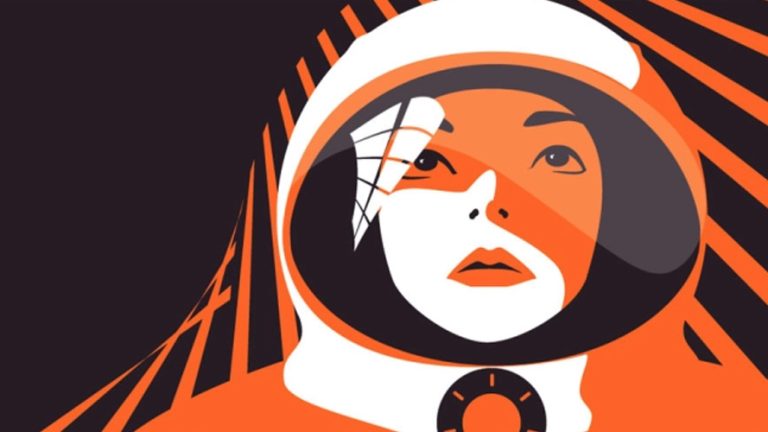Women face many of the same physical and psychological difficulties of spaceflight as men
Women have been contributing to space exploration since its early days, both as astronauts and as scientists. The United States currently has the highest running tally of women in space, although Russia accomplished this first, sending Valentina Tereshkova into orbit in 1963 aboard the Vostok 6 mission. Today, three nations have space programs in which women regularly take part in including China, Russia, and the U.S. and so on.
Human spaceflight began in the late 1950s and early 1960s and early research on possible crewed missions to space studied the expected effects of space on humans, also considering women. The research showed that women in space might even be suited better for space missions due to a range of reasons.
In the competition between the Soviet Union (USSR) and the United States known as the Space Race both nations chose their first space pilots known as cosmonauts in the USSR and astronauts in the US for their programs from the ranks of their military high-speed jet test pilots, who were exclusively men. The first woman in space to fly to space became Valentina Tereshkova aboard Vostok 6 on June 16th 1963, completing a 70.8-hour flight making a total of 48 orbits before returning to Earth, but neither the USSR did send another in the following 20 years until Svetlana Savitskaya in 1982, the second woman, nor the US until 1983 with its first woman Sally Ride.
Yet even with these advances, there are still plenty of challenges for women in this field. In 1978, for example, when NASA’s Astronaut Corps graduated its first class that included women, the six women astronauts who took part were referred to as “Glamornauts,” at one point called “eye-popping space gals.” More than 40 years later, the agency still struggles with gender equality, a fact that was evidenced in March 2019 when an all-women space mission—meant to be a historic moment—had to be cancelled because the agency didn’t have enough space suits for them. The first all-women in space walk did end up happening seven months later.
Among the missteps, however, are obvious leaps forward. In 2013, NASA’s new astronaut recruits were split down the middle with four men and four women joining the program. The space agency’s style guides have also been updated to eliminate gendered phrases such as “manned spaceflight” (calling it a “human spaceflight” instead). Jim Bridenstine, the current head of the agency, has been quoted several times saying his organization is committed to fostering diversity. And in a keynote speech by Bridenstine at the International Astronautical Congress in October 2019, he said the next astronauts on the moon in 2024 will likely include multiple women.
Read on to learn about the history of women in space:
Katherine Johnson (1961):
U.S. mathematician Katherine Johnson was an influential figure throughout her 35-year career with NASA, which began when the agency was a fledgling organization called NACA (National Advisory Committee for Aeronautics). Her first major contribution came in 1961 when she successfully calculated the flight trajectory for the first women in space. Other contributions made by Johnson, who was featured in the 2016 movie “Hidden Figures,” included ushering in the agency’s uses of computers, aided in large part by her sharp knack for manual calculations.
Valentina Tereshkova (1963):
In 1963, Soviet cosmonaut Valentina Tereshkova made world history when she piloted the Vostok 6 solo mission, becoming the first ever woman in space. Prior to her involvement with the Russian space program, the bold cosmonaut was an amateur skydiver. More than 50 years later, she remains the only woman to have flown a solo space mission.
Svetlana Savitskaya (1982):
After Tereshkova’s solo mission, it was nearly 20 years before another woman went into space. That occurred in 1982 when another Soviet cosmonaut, Svetlana Savitskaya, flew aboard the Soyuz T-7 mission, making her the second woman in space. Two years later, she earned herself a second title as the first woman spacewalker on her third flight when she welded metal outside the spacecraft during the Soyuz T-5 mission.
Sally Ride (1983):
The following year, the United States caught up with the Soviet space program in terms of women’s participation when NASA astronaut Sally Ride joined the STS-7 mission to deploy communications satellites, a mission that later earned her the namesake holiday. One of the satellites she helped set up was the Anik C2—the first in a series of satellites that were three times more powerful than any of their predecessors. Ride’s historic mission occurred aboard the Challenger, the same spacecraft that exploded three years later due to a structural failure.
Kathryn Sullivan (1984):
U.S. astronaut Kathryn Sullivan came close to becoming the first woman to walk in space but Svetlana Savitskaya, mentioned earlier, beat her by about 80 days. Instead, she became the second women spacewalker when she carried out her EVA Oct. 11, 1984. During that spacewalk, which was part of NASA’s STS-41-G mission, Sullivan spent more than three hours illustrating how a satellite might be refueled while in orbit.
Kalpana Chawla (March 17, 1962 – February 1, 2003)
was an American astronaut and engineer who was the first woman of Indian origin to go to space. She first flew on Space Shuttle Columbia in 1997 as a mission specialist and primary robotic arm operator. Her second flight was on STS-107, the final flight of Space Shuttle Columbia in 2003. Chawla was one of the seven crew members who died in the Space Shuttle Columbia disaster when the spacecraft disintegrated during its re-entry into the Earth’s atmosphere. Chawla was posthumously awarded the Congressional Space Medal of Honor, and several streets, universities, and institutions have been named in her honor. She is regarded as a national hero in India.
Sunita Williams (2007):
Among other accomplishments, NASA flight engineer and U.S astronaut Sunita Williams was the first person to run a marathon in space. This impressive feat occurred in April 2007 when she competed in the Boston Marathon while in orbit, circling the Earth twice in the four hours and 24 minutes it took her to complete the race on a space treadmill. At one time, she also held the record for the most spacewalks by a woman, having completed seven.






Add comment